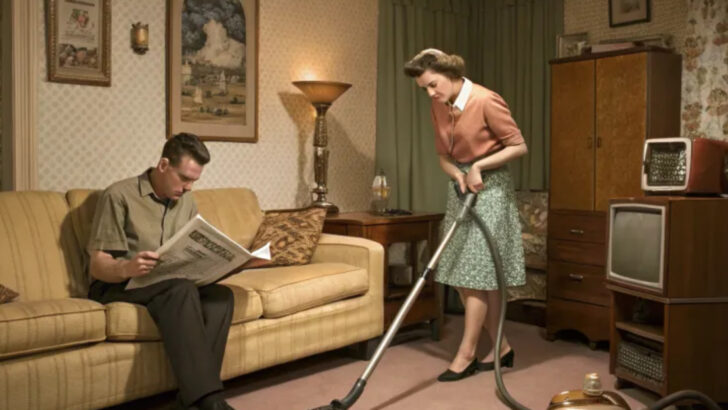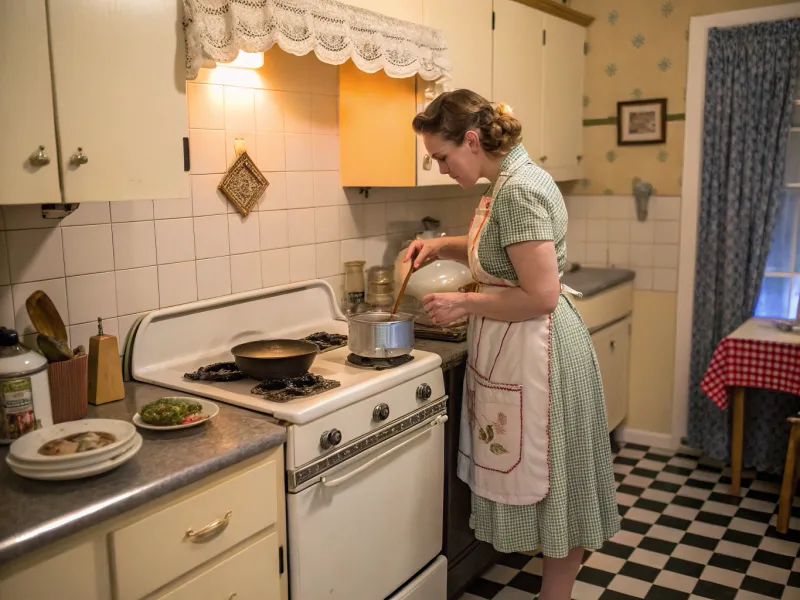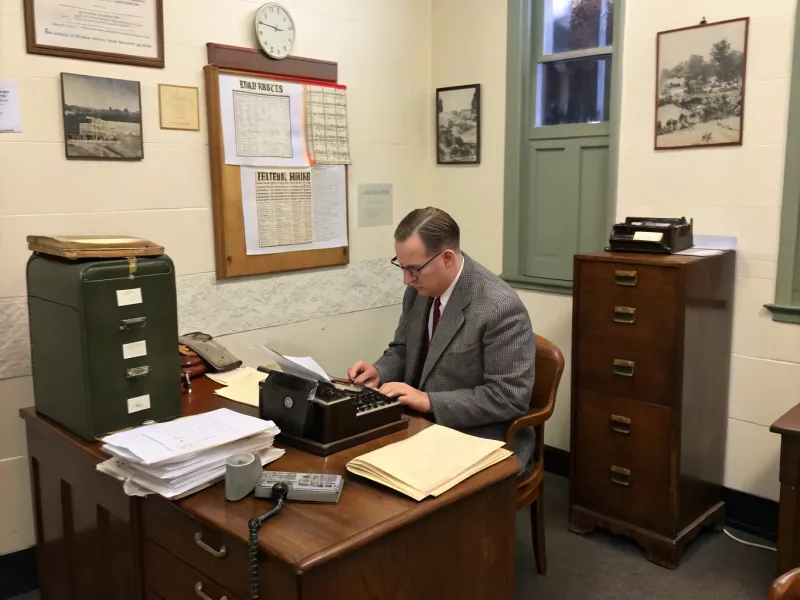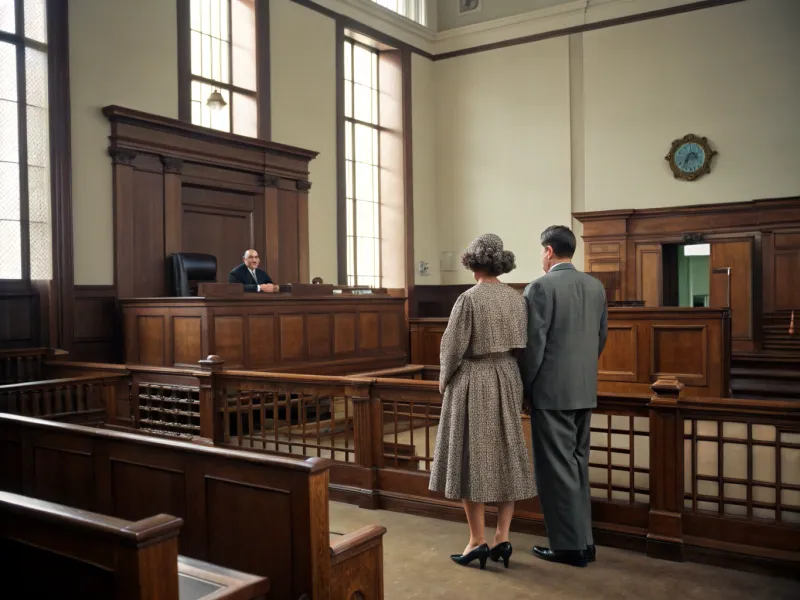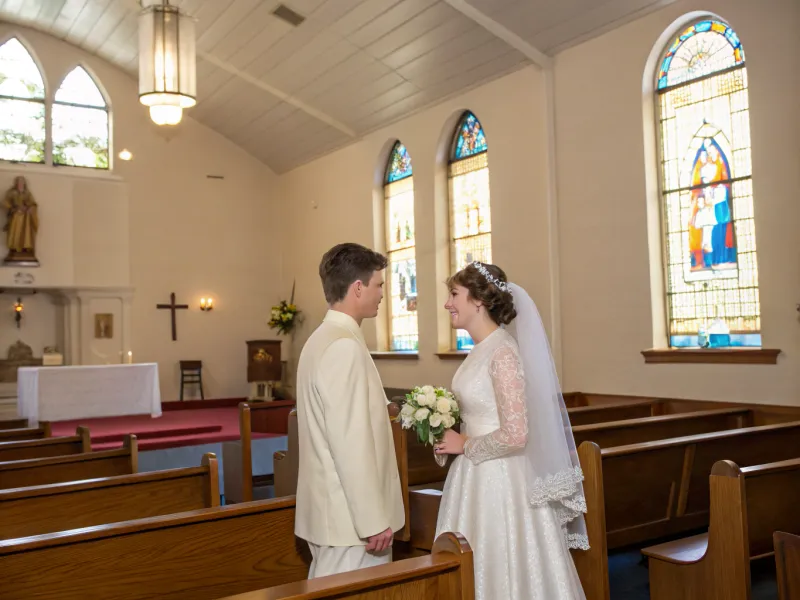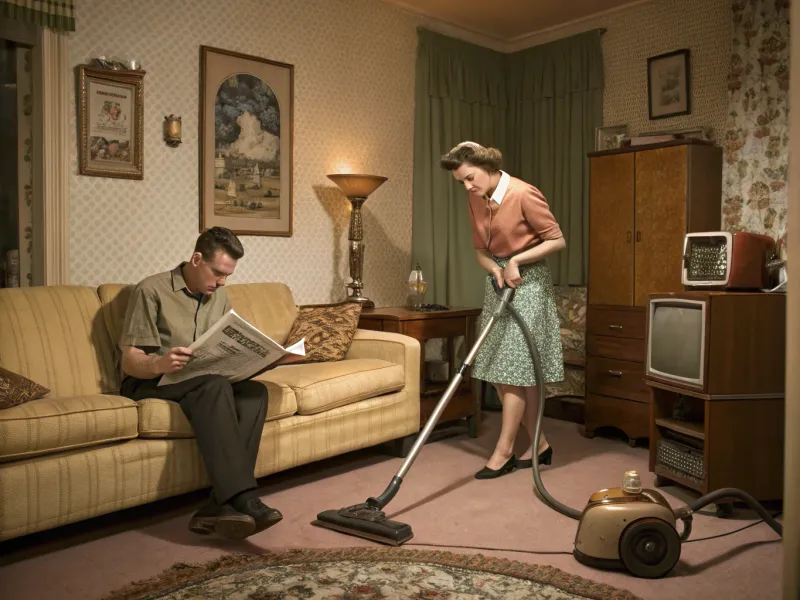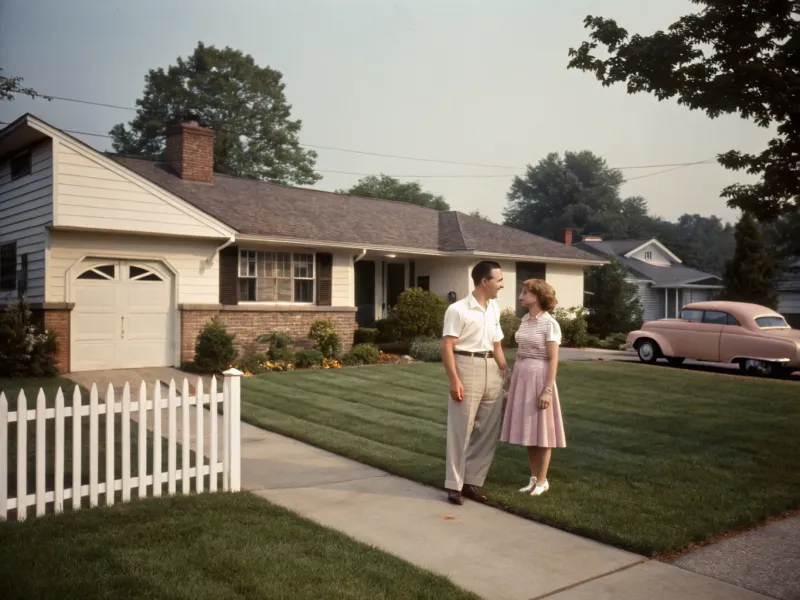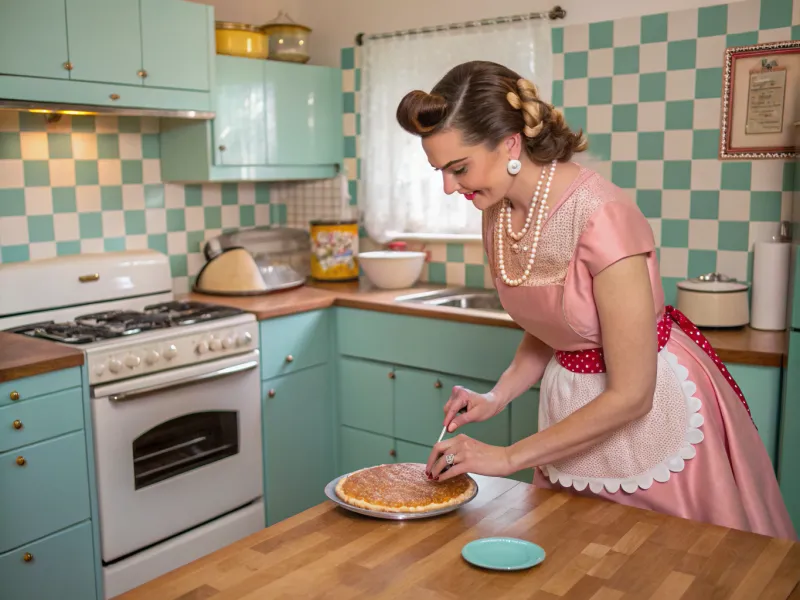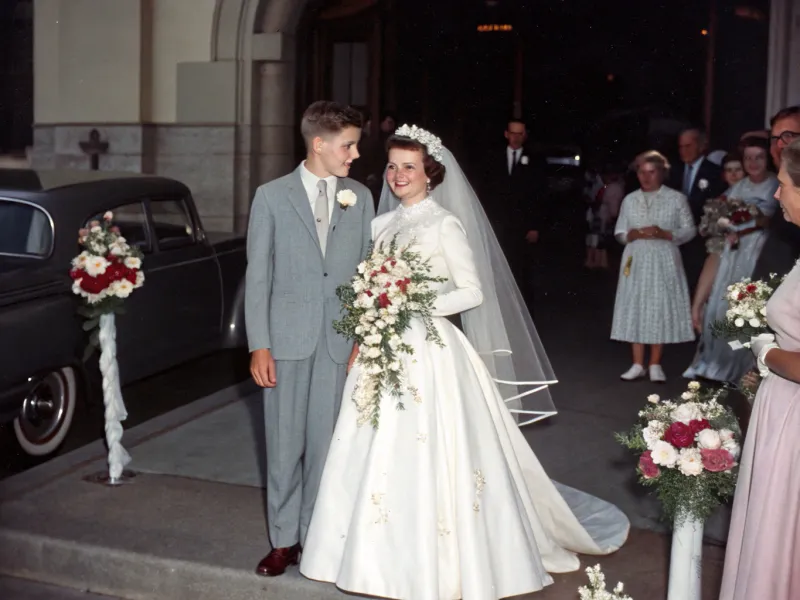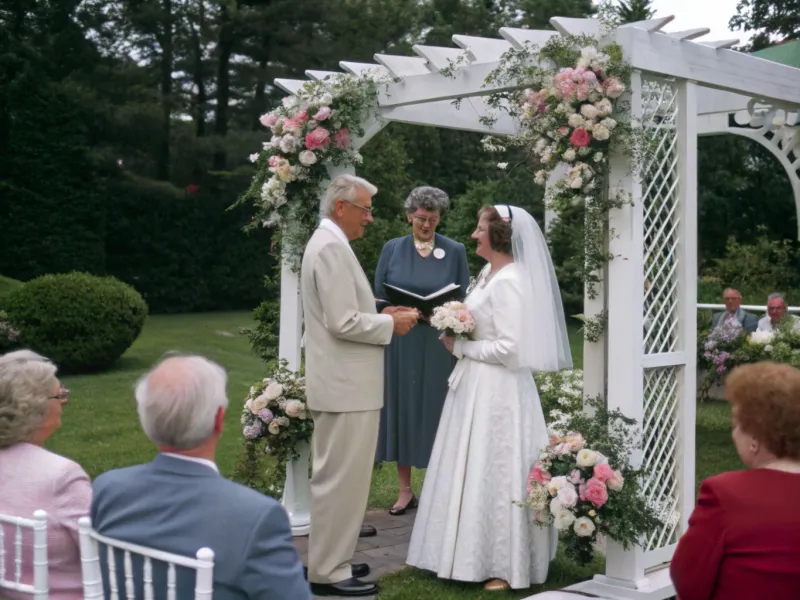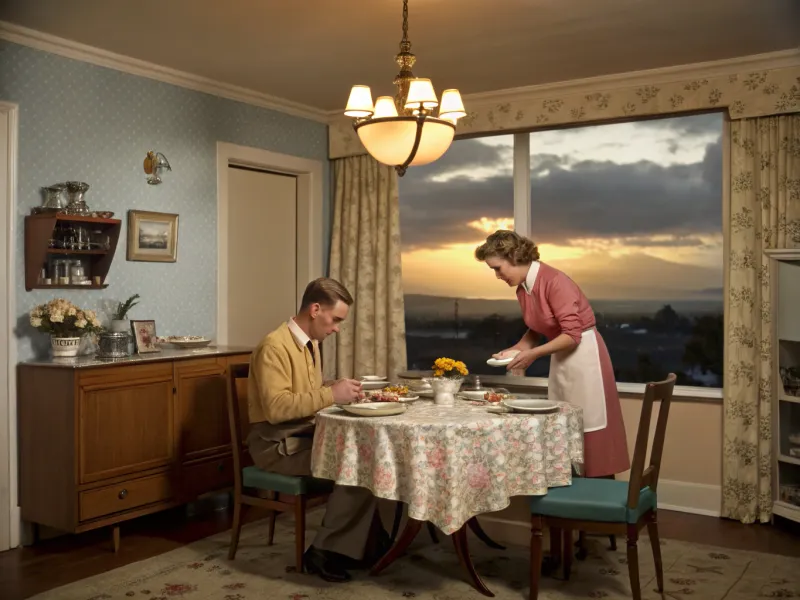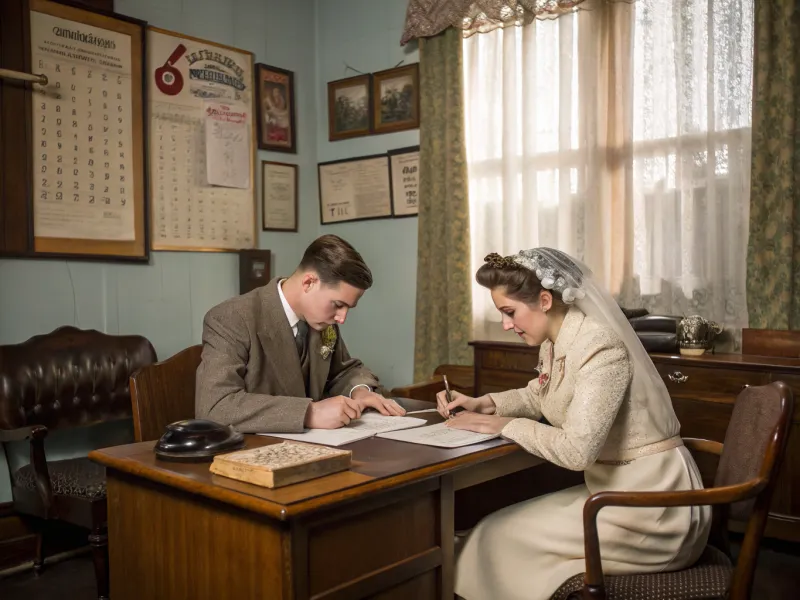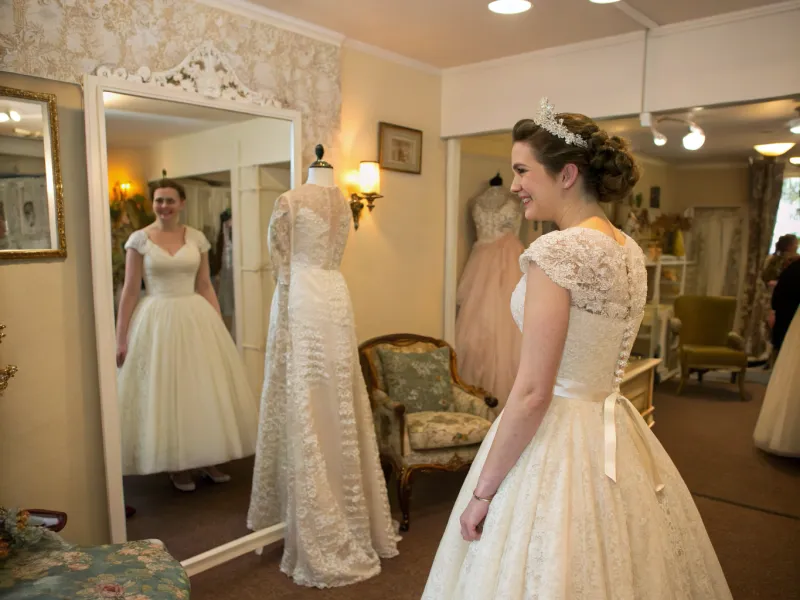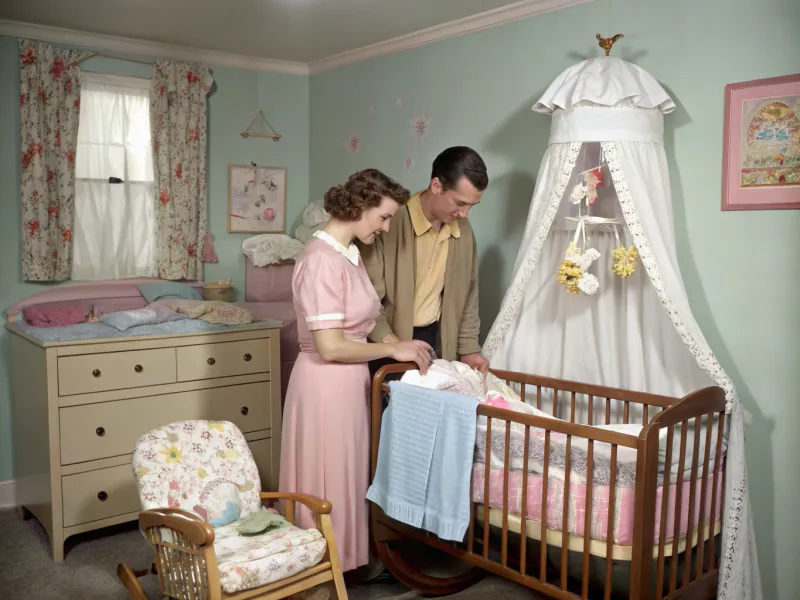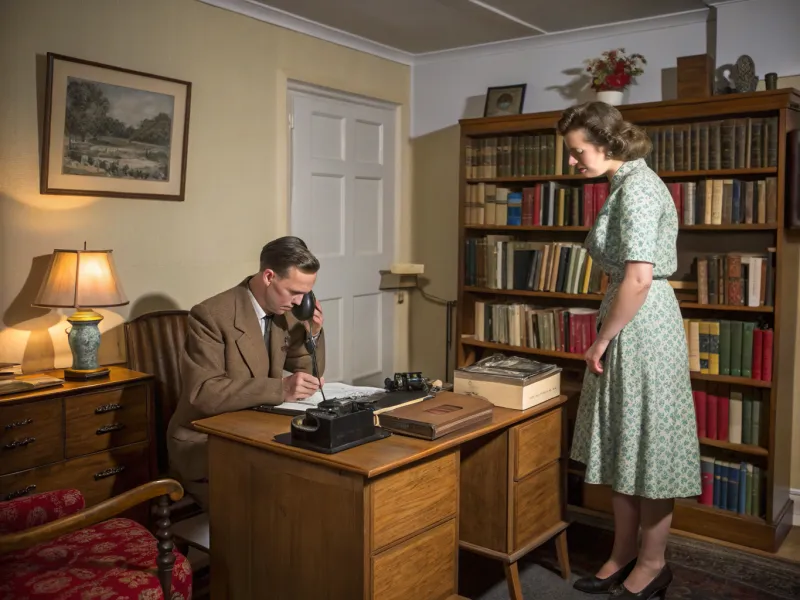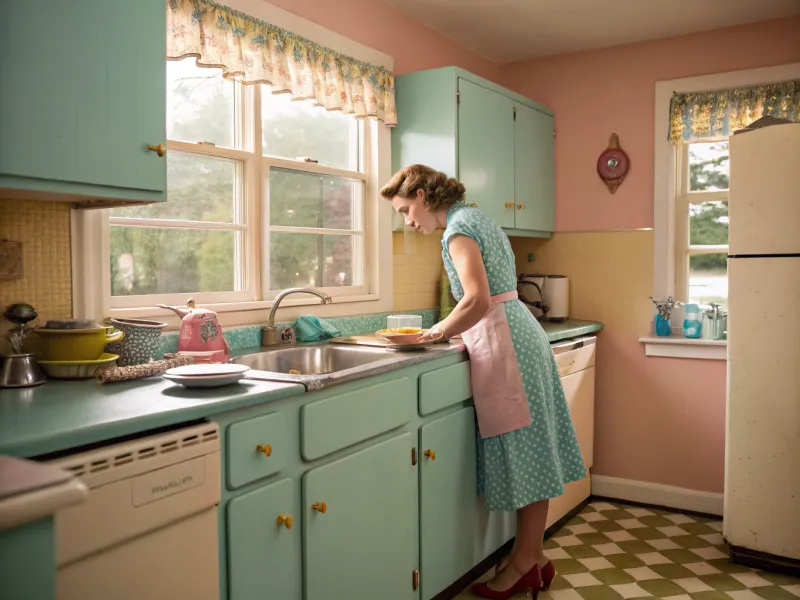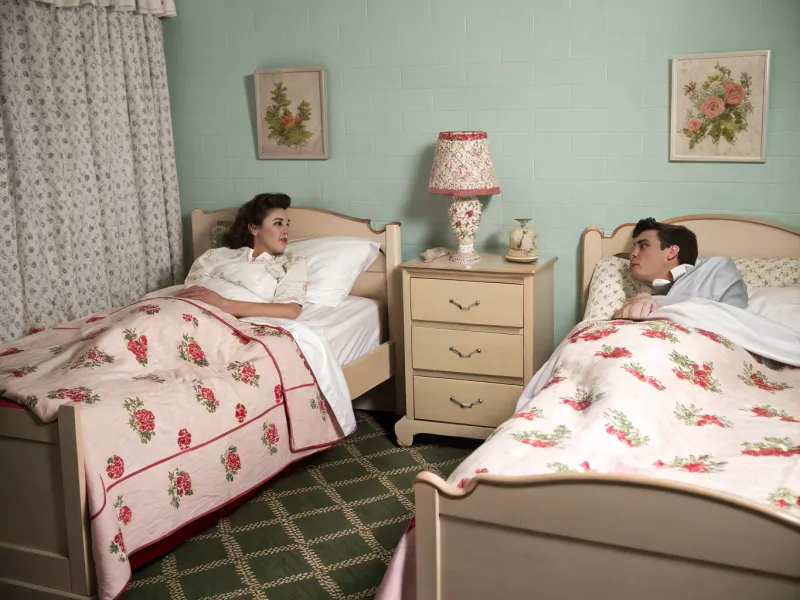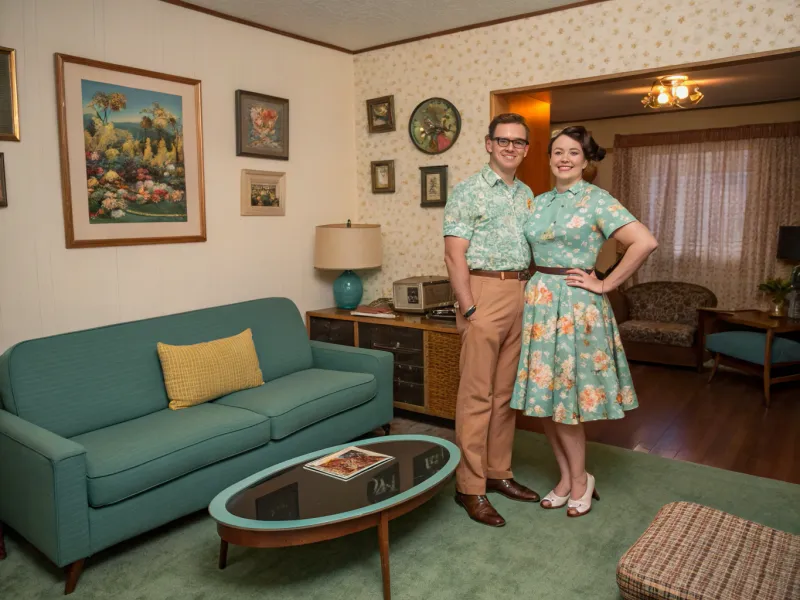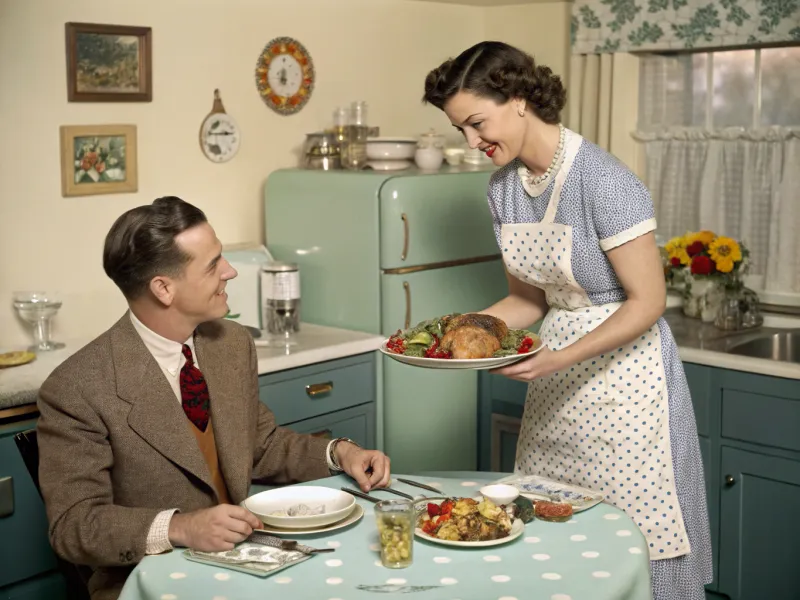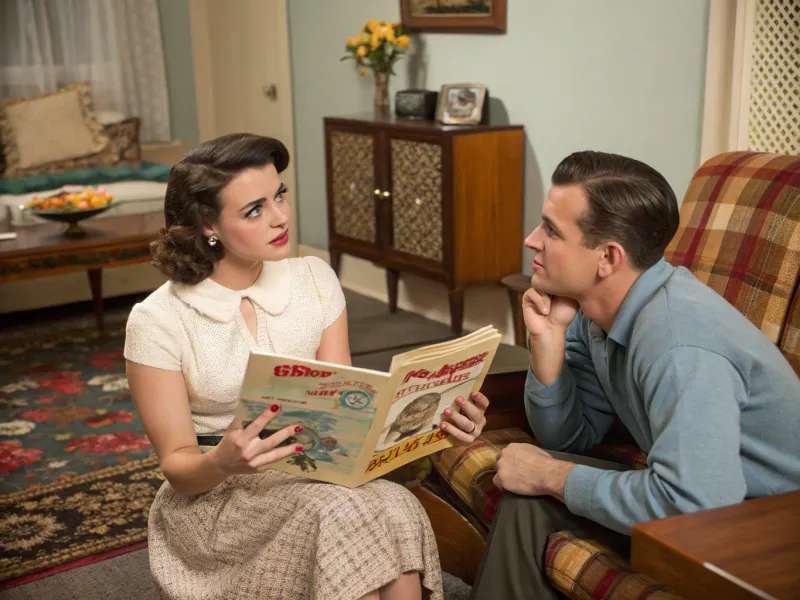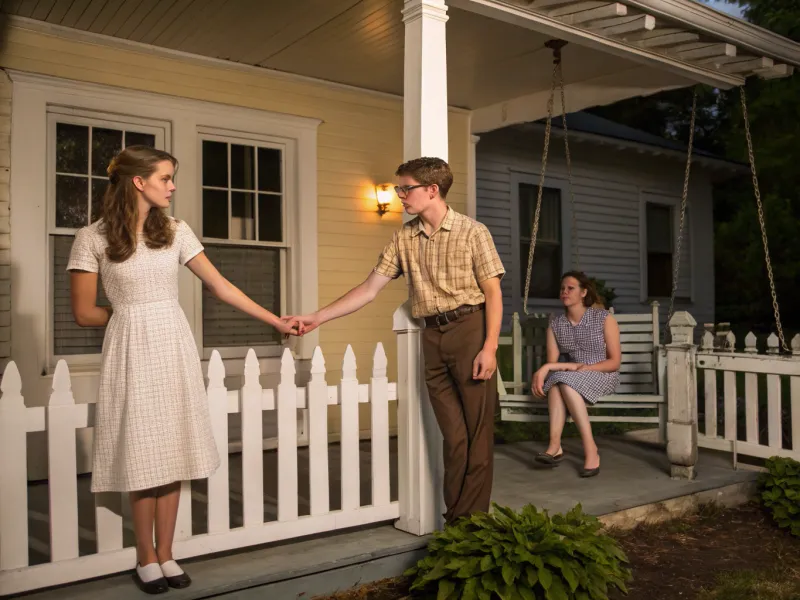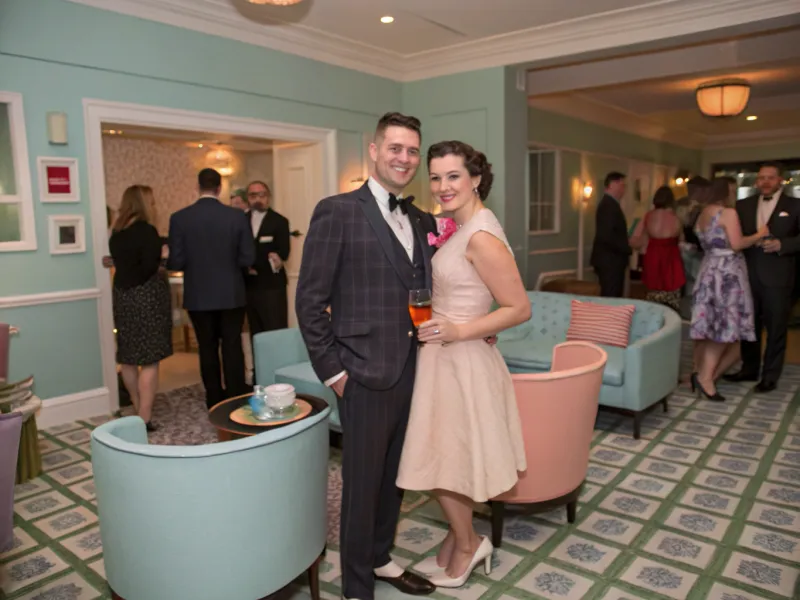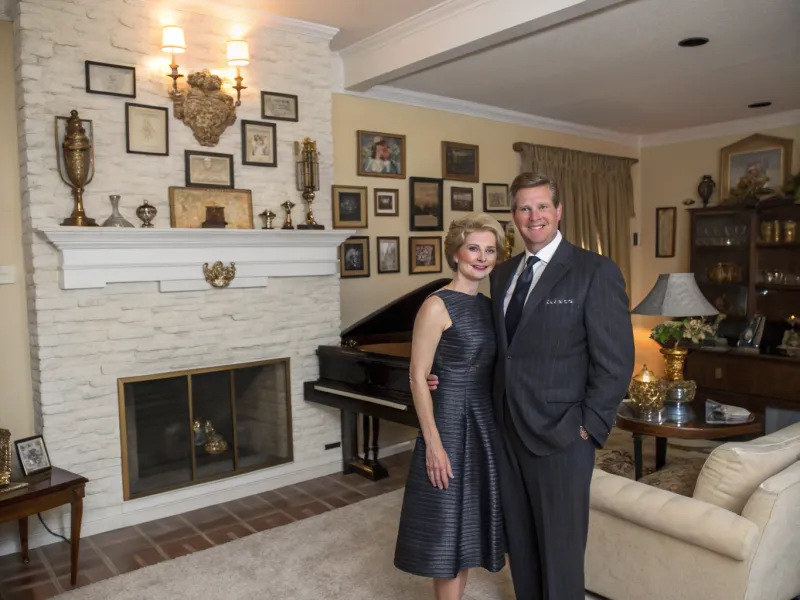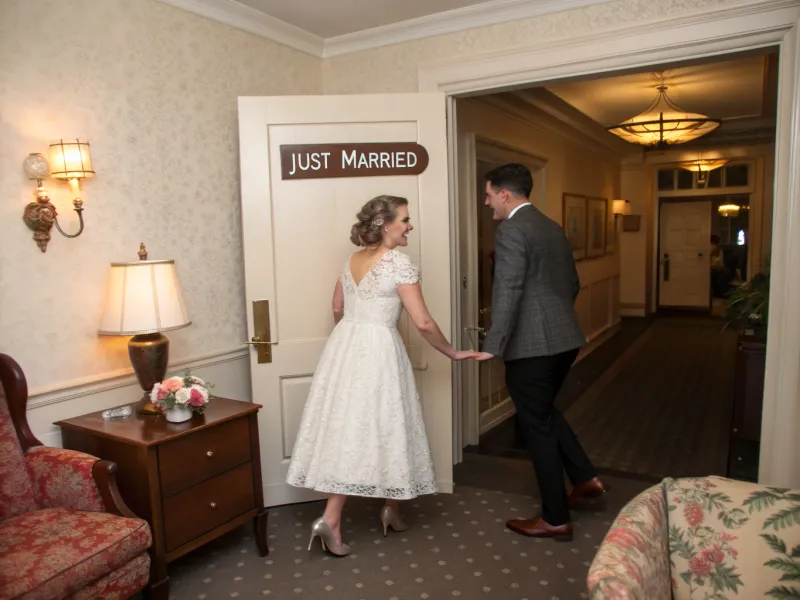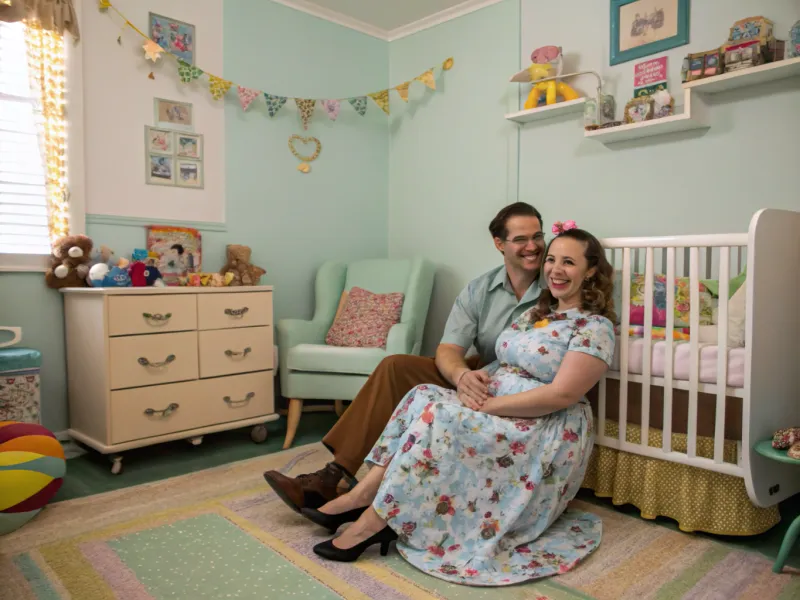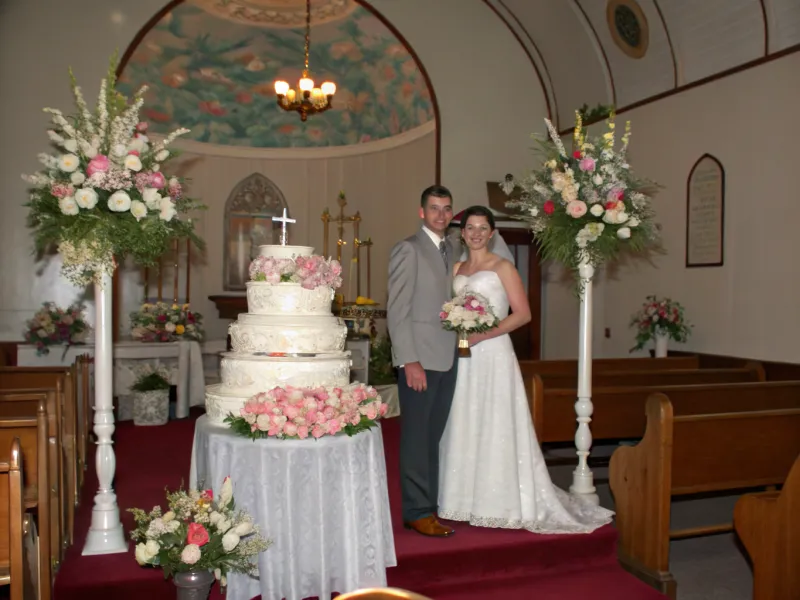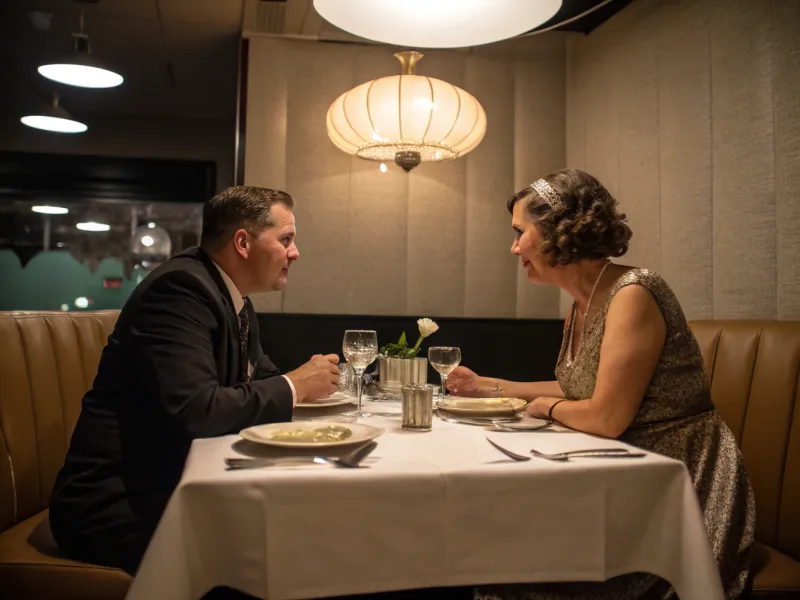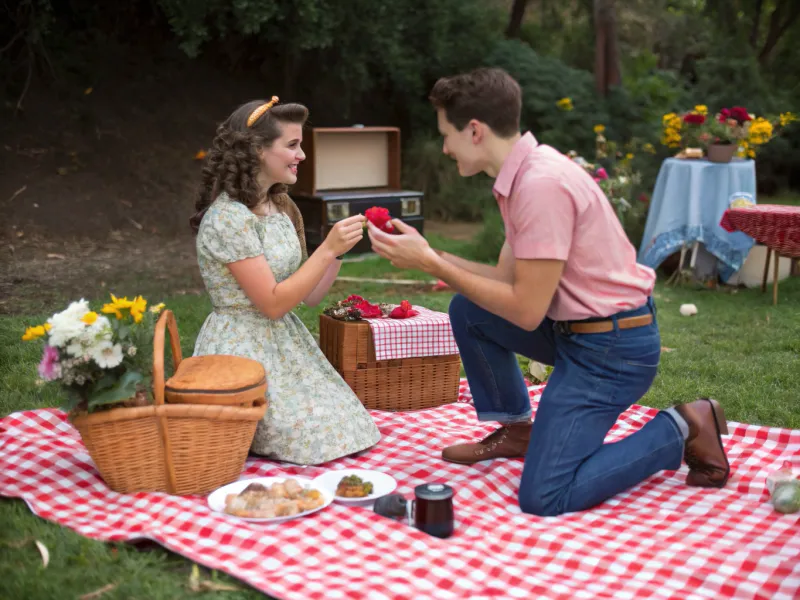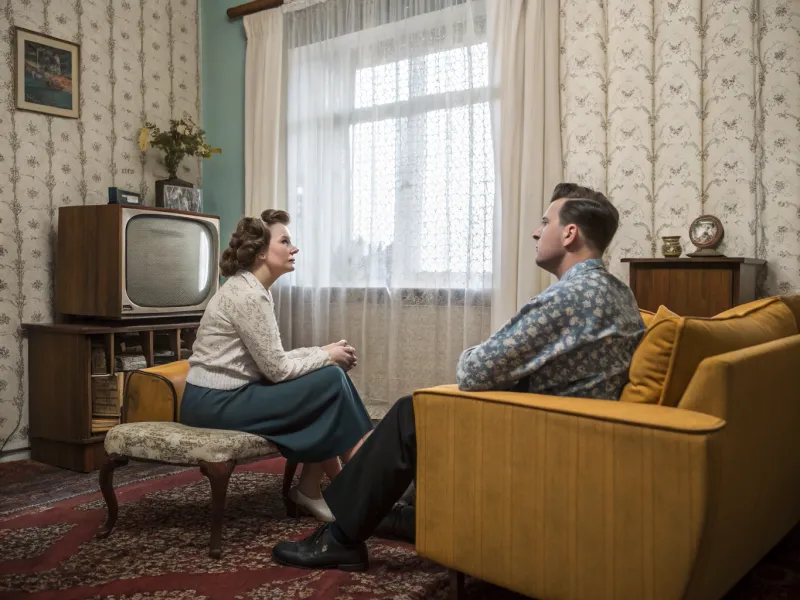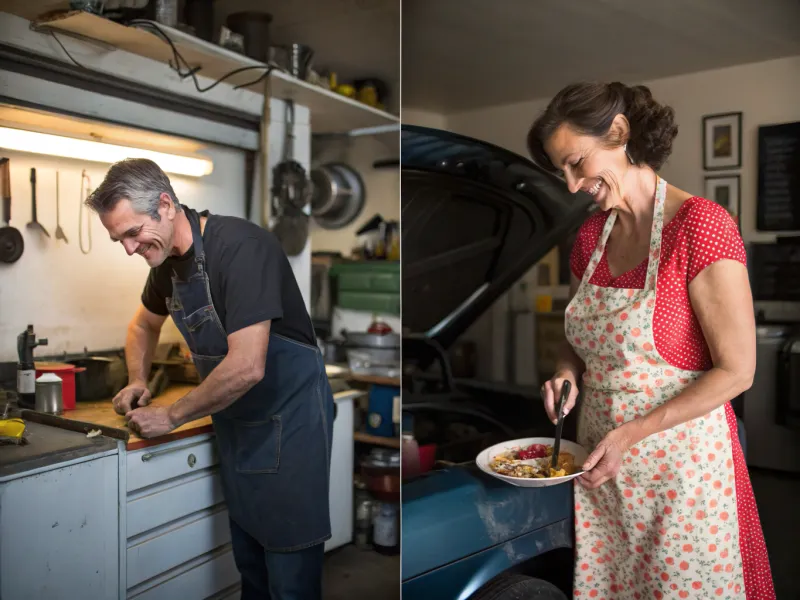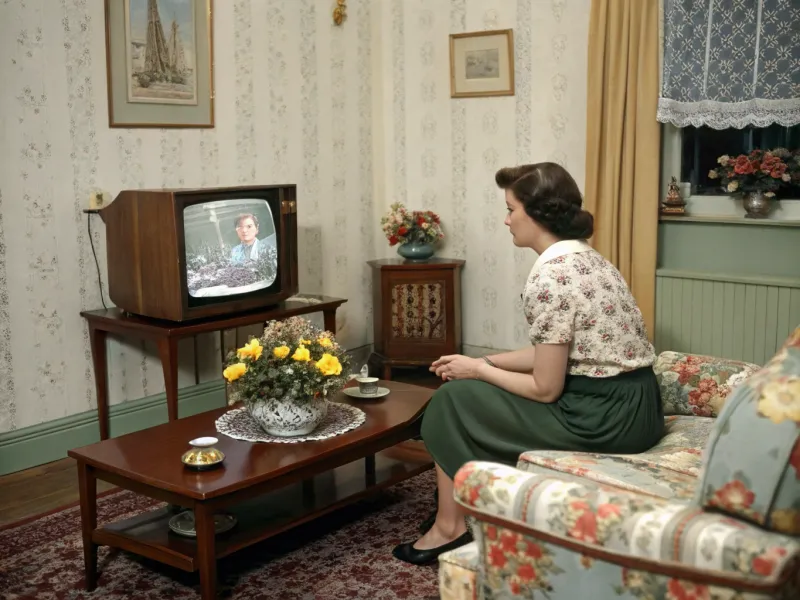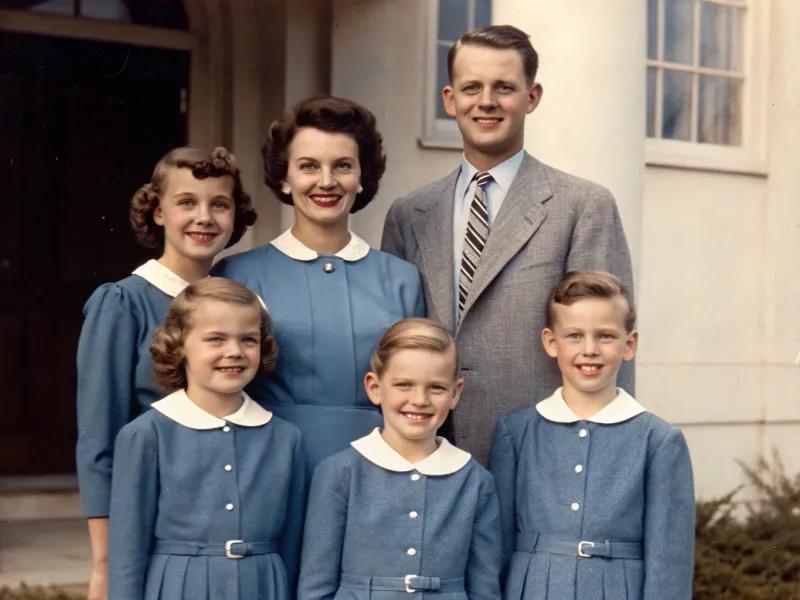Ah, os anos 50 - uma época em que Elvis dominava as ondas de rádio, as saias poodle estavam na moda e o casamento tinha o seu próprio conjunto de regras rígidas.
Nessa altura, os papéis tradicionais de género moldavam os ideais do matrimónio. Esperava-se que as mulheres trocassem os seus sonhos por aventais, enquanto os homens vestiam fatos e gravatas para trazer o bacon para casa. O casamento tinha menos a ver com amor e mais com o cumprimento das normas sociais.
Mas como os tempos mudaram! Percorremos um longo caminho desde aqueles dias em que se usavam bolachas, e é fascinante ver até que ponto nos afastámos destas crenças antiquadas.
1. A mulher como dona de casa
Antigamente, acreditava-se que o lugar da mulher era em casa, cuidando das tarefas domésticas e criando os filhos. Esta era a norma, e muitas mulheres sentiam-se pressionadas a conformar-se.
Hoje em dia, o panorama mudou radicalmente. As mulheres estão agora a prosperar em várias carreiras, equilibrando a vida profissional e familiar.
A ideia de que uma mulher deve ser apenas uma dona de casa está ultrapassada, A sociedade moderna reconhece a importância da escolha e da realização pessoais. Os casais partilham agora as responsabilidades domésticas, o que reflecte uma mudança no sentido da igualdade das parcerias.
2. O homem como ganha-pão
A expetativa de que os homens devem ser os principais ganhadores de dinheiro num casamento era uma pedra angular das crenças dos anos 50. Os homens eram pressionados a subir a escada empresarial, enquanto as suas mulheres geriam o lar.
Felizmente, esta crença foi largamente desmantelada, com os agregados familiares com dois rendimentos a tornarem-se a norma. Atualmente, é comum que ambos os parceiros contribuam financeiramente, permitindo uma maior flexibilidade e a partilha de responsabilidades.
Esta mudança reflecte a crescente aceitação pela sociedade de diversos papéis no casamento, centrados na parceria e não em papéis rígidos de género.
3. Estigma em torno do divórcio
Nos anos 50, o divórcio era visto como um fracasso escandaloso, algo a evitar a todo o custo. Os casais permaneciam frequentemente em casamentos infelizes para manter as aparências.
No entanto, a perspetiva atual é muito mais compreensiva. O divórcio é agora visto como uma opção viável para quem tem relações pouco saudáveis, com a sociedade a reconhecer a importância da felicidade e do bem-estar pessoal.
Esta mudança reflecte uma aceitação mais ampla das escolhas individuais e a compreensão de que, por vezes, a separação é o melhor caminho a seguir.
4. O casamento como uma necessidade
No passado, o casamento era considerado um marco essencial na vida, quase obrigatório para a aceitação social. As pessoas casavam-se jovens, dando muitas vezes prioridade a esse facto em detrimento do crescimento pessoal ou das aspirações profissionais.
Atualmente, o casamento é visto mais como uma escolha do que como um requisito. Muitas pessoas optam por casar mais tarde na vida ou nem chegam a casar, concentrando-se primeiro no desenvolvimento pessoal e nos objectivos profissionais.
Esta mudança evidencia uma tendência crescente para a auto-descoberta e a realização individual antes de se comprometer com uma parceria para toda a vida.
5. Papéis domésticos específicos de género
A década de 1950 foi marcada por papéis rígidos de género dentro de casa. Esperava-se que as mulheres cozinhassem, limpassem e cuidassem das crianças, enquanto os homens tratavam das reparações e das finanças.
A sociedade moderna ultrapassou largamente estes estereótipos. Atualmente, os casais partilham tarefas com base nos seus pontos fortes e preferências pessoais, em vez de aderirem a normas antiquadas.
Esta abordagem de colaboração promove a igualdade e reforça as relações, uma vez que ambos os parceiros contribuem para o agregado familiar. É um reflexo da evolução das nossas opiniões sobre o género e do valor que atribuímos à parceria.
6. Casamento para a estabilidade
Na década de 1950, o casamento era frequentemente visto como um meio de alcançar estabilidade financeira e social. As pessoas acreditavam que dar o nó garantiria o seu futuro, tanto a nível económico como social.
Hoje em dia, a tónica passou a ser colocada no casamento por amor e compatibilidade. A independência financeira e o crescimento pessoal são prioritários, permitindo que os indivíduos entrem no casamento como parceiros iguais.
Esta mudança reflecte um entendimento mais amplo do casamento como uma união de iguais, assente no respeito mútuo e em objectivos partilhados, em vez de uma mera transação para a estabilidade.
7. A dona de casa perfeita
A imagem de a dona de casa perfeita era idolatrado nos anos 50, esperando-se que as mulheres mantivessem casas imaculadas e disposições alegres. Elas eram o epítome da graça doméstica, fazendo malabarismos com as tarefas com um sorriso.
Atualmente, este ideal é visto como irrealista e restritivo. As mulheres são encorajadas a seguir as suas paixões, quer se trate de uma carreira, de um passatempo ou de ambos.
A visão moderna celebra a individualidade e rejeita a noção de que o valor de uma mulher está ligado à sua capacidade de manter uma casa imaculada. Trata-se de encontrar o equilíbrio e abraçar o seu verdadeiro eu.
8. Casamento precoce
Casar jovem era uma prática comum na década de 1950, frequentemente motivada pela pressão social e pela crença de que era a chave para uma vida de sucesso. Esperava-se que os casais se estabelecessem rapidamente e constituíssem família.
Atualmente, as pessoas esperam mais tempo para casar, optando por explorar a vida e estabelecer-se antes de se comprometerem. Esta tendência significa uma mudança no sentido de valorizar o crescimento pessoal e a compatibilidade em detrimento do cumprimento de uma linha temporal.
As relações modernas prosperam com base na compreensão e na partilha de experiências, em vez de se precipitarem no casamento devido às expectativas da sociedade.
9. Casamento por estatuto social
Na década de 1950, o casamento era frequentemente procurado para obter estatuto e aceitação social. Ser casado era visto como um indicador de sucesso e respeitabilidade. Felizmente, esta noção foi largamente posta de parte.
A sociedade moderna dá mais valor à felicidade pessoal e às ligações autênticas do que ao estatuto superficial. As pessoas casam-se por amor, companheirismo e valores partilhados e não para satisfazer as expectativas da sociedade.
Esta mudança reflecte uma apreciação mais profunda da individualidade e a importância de construir relações baseadas no respeito mútuo e no afeto genuíno.
10. A crença "até que a morte nos separe
A ideia de que o casamento deve durar até à morte era uma crença dominante na década de 1950. Os casais eram encorajados a manterem-se juntos a todo o custo, mesmo que a infelicidade se avizinhasse.
Atualmente, esta noção evoluiu para uma compreensão mais flexível das relações. Embora o compromisso continue a ser importante, reconhece-se que nem todos os casamentos são feitos para durar para sempre.
Atualmente, o foco está em parcerias saudáveis e gratificantes, onde ambos os indivíduos podem crescer. Esta mudança reconhece que, por vezes, a separação é um passo necessário para o bem-estar e a felicidade pessoal.
11. A obediência da esposa
A expetativa de obediência da esposa era um tema dominante nos casamentos dos anos 50. Esperava-se frequentemente que as mulheres acatassem as decisões dos seus maridos sem questionar. Felizmente, esta crença tem sido amplamente rejeitada nos tempos modernos.
As parcerias actuais assentam no respeito mútuo, em que ambas as vozes são ouvidas e valorizadas. A igualdade é a pedra angular de um casamento saudável, com decisões tomadas em colaboração.
Esta mudança evidencia o reconhecimento crescente por parte da sociedade dos direitos das mulheres e da importância de parcerias iguais, abrindo caminho a relações mais saudáveis e equilibradas.
12. O casamento como uma transação comercial
Na década de 1950, o casamento era por vezes encarado como uma transação comercial, com alianças formadas para obter ganhos financeiros ou posição social. O amor era frequentemente secundário em relação a considerações práticas.
Hoje em dia, esta ideia é largamente obsoleta. As pessoas casam por amor, ligação e valores partilhados, em vez de razões materialistas. O foco passou a ser a construção de uma parceria que apoie o crescimento pessoal e a felicidade.
Esta evolução reflecte uma mudança cultural mais ampla no sentido de valorizar as ligações emocionais e a realização individual em detrimento dos ganhos financeiros ou sociais.
13. O casamento como objetivo final
A década de 1950 retratou o casamento como o objetivo final das mulheres, com as expectativas sociais a empurrá-las para o altar. Este facto ofuscava frequentemente as aspirações pessoais e as ambições profissionais.
Felizmente, a sociedade moderna encoraja as mulheres a seguirem caminhos diferentes, quer isso inclua o casamento ou não. A tónica é agora colocada na realização pessoal e na independência, sendo o casamento visto como uma parceria e não como um destino.
Esta mudança permite que os indivíduos definam os seus próprios caminhos, celebrando as conquistas para além das expectativas conjugais tradicionais.
14. Casamento para os filhos
Casar principalmente para ter filhos era uma crença comum na década de 1950. A paternidade era vista como o principal objetivo do casamento, esperando-se que os casais constituíssem família pouco depois de darem o nó.
Atualmente, a decisão de ter filhos é mais pessoal e variada. Muitos casais optam por se concentrar na sua relação, na sua carreira ou no seu crescimento pessoal antes de considerarem a possibilidade de serem pais.
Esta mudança evidencia um entendimento mais alargado do casamento como uma parceria que apoia as escolhas e prioridades individuais, em vez de um meio para atingir um fim.
15. A autoridade do marido
Na década de 1950, a autoridade do marido era um dado adquirido, com os homens a deterem as rédeas da tomada de decisões. Esperava-se que as mulheres obedecessem e apoiassem as escolhas dos seus maridos. Felizmente, esta noção foi largamente abandonada.
Os casamentos modernos prosperam com base na igualdade e na partilha de decisões, com ambos os parceiros a contribuírem para a conversa.
Esta evolução reflecte a ênfase crescente da sociedade no respeito mútuo e na colaboração, abrindo caminho a relações mais fortes e equilibradas em que ambas as vozes são valorizadas e ouvidas.
16. O sacrifício da dona de casa
O sacrifício de sonhos e ambições pessoais em prol da vida doméstica era uma expetativa comum para as mulheres na década de 1950. Muitas sentiam-se pressionadas a abandonar as aspirações profissionais em favor dos deveres domésticos.
Hoje em dia, esta crença é considerada ultrapassada, uma vez que as mulheres são encorajadas a perseguir os seus objectivos e paixões a par da vida familiar.
A visão moderna celebra a individualidade e reconhece que ambos os parceiros podem contribuir para o agregado familiar ao mesmo tempo que alimentam os seus sonhos pessoais. Esta mudança reflecte um entendimento mais amplo da igualdade e da realização pessoal nas parcerias.
17. Camas separadas para casais
Nos anos 50, a noção de casais que dormiam em camas separadas não era invulgar. Acreditava-se que isso permitia manter um sentido de espaço pessoal e de decoro, ecoando uma época que dava prioridade à modéstia e à contenção. Atualmente, esta prática é vista como antiquada e a maioria dos casais prefere partilhar a cama.
A mudança para camas partilhadas reflecte uma alteração na compreensão da intimidade e da ligação no casamento. Atualmente, os casais encaram o facto de dormirem juntos como uma parte importante da sua relação, reforçando os laços emocionais e físicos.
Embora alguns possam ainda escolher camas separadas devido a preferências de sono, a ideia já não é uma norma ou expetativa social.
18. Roupas a condizer para casais
Nos anos 50, os casais usavam frequentemente roupas iguais como sinal de unidade e harmonia. Acreditava-se que o facto de se vestirem da mesma forma reforçaria a ligação entre os parceiros e apresentaria uma fachada perfeita ao mundo exterior.
As revistas de moda apresentavam frequentemente casais em conjuntos coordenados, sugerindo estilos e cores que se complementavam. Esta prática era vista como uma forma de mostrar que o casal estava em sintonia.
Hoje em dia, a expressão individual é celebrada e os fatos a condizer são mais uma novidade divertida do que uma expetativa conjugal.
19. As mulheres ao serviço dos maridos
Nos anos 50, era comum as mulheres servirem as refeições aos seus maridos como demonstração de afeto e carinho. Esta prática estava enraizada na crença tradicional de que o papel da mulher era nutrir e prover.
O jantar era uma altura em que a família se reunia e a mulher assegurava que tudo estava perfeito. Hoje em dia, a preparação e o serviço das refeições são frequentemente responsabilidades partilhadas, reflectindo o respeito mútuo e a parceria.
Os casais modernos apreciam a importância da partilha de tarefas, reconhecendo que a colaboração fortalece a sua relação.
20. Aprovação do marido para as compras
Durante os anos 50, muitas mulheres precisavam da aprovação do marido antes de efectuarem compras importantes. Esta crença baseava-se na ideia de que os homens eram os decisores financeiros do agregado familiar.
As mulheres consultavam frequentemente os seus maridos antes de comprarem qualquer coisa para além das necessidades diárias. Esta noção desapareceu em grande parte, sendo a independência financeira e a igualdade atualmente aspectos fundamentais das relações modernas.
Atualmente, as pessoas tomam decisões financeiras conjuntas, reconhecendo a importância da comunicação e da partilha de objectivos para alcançar o sucesso financeiro.
21. Rituais rigorosos de cortejamento
Nos anos 50, o namoro era um processo estruturado e formal, que implicava frequentemente regras estritas e a supervisão dos pais. Esperava-se que os jovens casais seguissem um conjunto específico de rituais que ditavam a forma como interagiam e desenvolviam as suas relações.
Estas regras destinavam-se a garantir a correção e a proteger a reputação. O namoro moderno é muito mais descontraído, com as pessoas a desfrutarem da liberdade de explorar as relações ao seu próprio ritmo.
Atualmente, a tónica é colocada no respeito mútuo e no consentimento, em vez de se seguir costumes rígidos. As pessoas apreciam o valor da autenticidade e da comunicação aberta.
22. Círculos sociais separados
Na década de 1950, era comum os maridos e as mulheres terem círculos sociais separados. Os homens passavam frequentemente tempo com amigos homens, enquanto as mulheres socializavam com outras mulheres. Essa separação era vista como uma forma de manter a individualidade dentro do casamento.
Hoje em dia, muitos casais valorizam as amizades e actividades partilhadas, vendo nelas uma forma de reforçar os seus laços. Embora as amizades individuais continuem a ser importantes, os casais gostam de passar tempo com amigos comuns, criando um ambiente social solidário e inclusivo.
As relações modernas prosperam com base em experiências e ligações partilhadas.
23. Casamento por reputação
Na década de 1950, o casamento era frequentemente utilizado para melhorar a reputação social. Esperava-se que os casais mantivessem uma determinada imagem, reflectindo as normas e expectativas da sociedade. Esta pressão conduzia frequentemente a relações superficiais, mais centradas nas aparências do que numa ligação genuína.
Atualmente, a tónica é colocada na autenticidade e na realização pessoal nas relações. As pessoas dão prioridade à procura de parceiros que estejam de acordo com os seus valores e aspirações, em vez de se limitarem a satisfazer as expectativas da sociedade.
Os casais modernos valorizam a transparência e a honestidade, optando por construir relações baseadas no respeito e na compreensão mútuos.
24. Tabu da privacidade na lua de mel
Na década de 1950, a privacidade durante a lua de mel era frequentemente considerada tabu. Esperava-se que os recém-casados mantivessem um certo decoro, evitando demonstrações públicas de afeto. A ideia era manter a modéstia, mesmo nos momentos privados.
Atualmente, os recém-casados celebram o seu amor abertamente, abraçando a alegria da sua nova união. A lua de mel é vista como um momento para se relacionarem e desfrutarem da companhia um do outro sem constrangimentos sociais.
Os casais apreciam agora a privacidade e a intimidade da sua lua de mel, livres de normas e expectativas antiquadas, concentrando-se na viagem que têm pela frente.
25. Os filhos como cola para o casamento
Na década de 1950, os filhos eram frequentemente vistos como a chave para fortalecer um casamento. Acreditava-se que ter filhos aproximaria os casais e solidificaria a sua relação.
Esta crença levou, por vezes, os casais a terem filhos pelas razões erradas, sem terem em conta a sua disponibilidade. Atualmente, a decisão de ter filhos baseia-se muitas vezes na escolha pessoal e no desejo mútuo, e não na pressão da sociedade.
Os casais modernos ponderam a sua preparação emocional e financeira antes de constituir família, compreendendo que uma relação forte se constrói com base no respeito mútuo e no amor, e não apenas na partilha de responsabilidades.
26. O casamento "perfeito
Durante a década de 1950, havia uma enorme pressão para se ter o casamento "perfeito". Esperava-se que os casais organizassem cerimónias elaboradas que demonstrassem a sua posição social e a sua adesão à tradição. Este foco na perfeição ofuscava muitas vezes o verdadeiro significado do casamento.
Hoje em dia, os casamentos são vistos como uma celebração pessoal, reflectindo as personalidades e os valores únicos do casal. A tónica é colocada na criação de memórias significativas e não na adesão às expectativas da sociedade.
Os casais são encorajados a conceber cerimónias que lhes agradem, centrando-se no amor e no compromisso e não na extravagância.
27. O casamento como um assunto privado
Na década de 1950, o casamento era frequentemente visto como um assunto privado, em que os casais guardavam os assuntos pessoais para si próprios. Acreditava-se que discutir abertamente as questões conjugais levaria a julgamentos e mexericos.
Atualmente, a comunicação aberta e a procura de apoio são encorajadas nas relações. Os casais reconhecem a importância de partilhar os seus pensamentos e sentimentos, compreendendo que a procura de aconselhamento pode reforçar os seus laços.
As relações modernas prosperam com abertura e honestidade, permitindo que os parceiros cresçam juntos. O estigma em torno da discussão de questões conjugais diminuiu, reflectindo uma abordagem mais saudável à dinâmica da relação.
28. O homem propõe
A tradição de o homem propor o casamento era uma crença forte na década de 1950. Considerava-se que era da responsabilidade do homem iniciar o compromisso, reflectindo os papéis tradicionais de género.
Esta expetativa deixava muitas vezes as mulheres à espera que o seu parceiro desse o primeiro passo. Atualmente, as propostas podem vir de qualquer pessoa da relação, reflectindo uma abordagem mais igualitária. Os casais escolhem mutuamente quando estão prontos para dar o próximo passo.
A tónica é colocada na tomada de decisões partilhada e na compreensão, em vez de se aderir a normas de género ultrapassadas. Os compromissos modernos reflectem a igualdade e a parceria.
29. O tratamento silencioso como resolução de conflitos
Na década de 1950, o "tratamento do silêncio" era um método comum para resolver conflitos conjugais. Muitas vezes, os casais evitavam discutir os problemas, acreditando que o silêncio permitiria acalmar as tensões.
Esta abordagem conduziu a problemas não resolvidos e a ressentimentos. Atualmente, incentiva-se uma comunicação aberta, em que os parceiros abordam os problemas de forma direta e construtiva. As relações modernas são construídas com base na compreensão e na empatia, valorizando o diálogo honesto em detrimento do evitamento.
Os casais reconhecem a importância de resolver os conflitos através da conversa e do compromisso, promovendo uma parceria mais saudável e resistente. O tratamento de silêncio tornou-se obsoleto e foi substituído por uma comunicação construtiva.
30. O casamento definido pelos papéis de género
Na década de 1950, o casamento era frequentemente definido por papéis estritos de género, com os parceiros a aderirem a expectativas sociais específicas. Os homens eram vistos como provedores, enquanto as mulheres eram cuidadoras.
Esta divisão rígida limitava o crescimento e a realização pessoal. Os casamentos modernos adoptam a flexibilidade e a igualdade, permitindo que os parceiros definam os seus papéis com base nos seus pontos fortes e interesses. Os casais colaboram e apoiam-se mutuamente, rejeitando normas antiquadas que ditavam o comportamento.
Atualmente, as relações prosperam com base no respeito e compreensão mútuos, com os parceiros a trabalharem em conjunto para atingirem objectivos comuns. A tónica é colocada na parceria e não em papéis pré-definidos.
31. O silêncio da dona de casa
Durante a década de 1950, era comum a crença de que as mulheres deviam permanecer em silêncio nos assuntos domésticos, deixando que os maridos tomassem todas as decisões importantes. Esta ideia resultava da noção de que os homens estavam mais preparados para lidar com questões financeiras e sociais, enquanto as mulheres eram relegadas para segundo plano, não se esperando que expressassem opiniões ou preocupações.
Atualmente, este conceito foi largamente abandonado, sendo os casais encorajados a comunicar abertamente e a tomar decisões conjuntas. A parceria no casamento enfatiza agora o respeito mútuo e a igualdade de contribuições. Esta mudança permite uma relação mais equilibrada e harmoniosa, promovendo a compreensão e a cooperação.
Os casais são agora aconselhados a construir as suas relações com base num diálogo aberto e na partilha de responsabilidades, promovendo um ambiente em que ambos os parceiros possam prosperar e crescer juntos.
32. Crenças parentais uniformes
Na década de 1950, havia uma forte crença de que a parentalidade seguia um conjunto rigoroso de diretrizes, muitas vezes enfatizando a conformidade e a disciplina. Esperava-se que os pais aderissem às normas sociais, criando um lar que reflectisse os outros na vizinhança. Isto significava muitas vezes horas de deitar rigorosas, regras rígidas e liberdade limitada para as crianças se expressarem.
A parentalidade moderna afastou-se destes ideais, adoptando diversas abordagens que se adaptam à dinâmica familiar individual. Atualmente, os pais concentram-se em estimular a criatividade, encorajar a individualidade e promover uma comunicação aberta com os seus filhos.
As famílias de hoje adoptam frequentemente estilos parentais flexíveis que se adaptam às necessidades e personalidades únicas dos seus filhos. Isto encoraja as crianças a explorar as suas paixões e a desenvolver as suas próprias identidades num ambiente de apoio.

